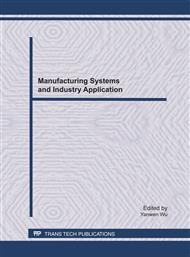p.1005
p.1010
p.1014
p.1020
p.1027
p.1032
p.1038
p.1044
p.1048
The Data Acquisition, Process and Reconstruction for a Reverse Engineering Study
Abstract:
As a modern design method that contrary to traditional design, RE technology use of special measuring apparatus to get dimensional data and enables one to start a design from an existing production model by combining computer technology, measurement technology and CAD/CAM technology. Firstly, The author has list the important application fields of RE technology, and then divided the RE process into four steps and described the detailed working flowchart. The data acquisition procedure includes datum-points creation and model measurement. For the threedimensional coordinate measuring machine, a contact measurement, the measuring method and working principal is deep discussed. As to the acquired data, the data processing should also be operated to meet the technique requirement, which consists of data splicing, noise eliminating, data interpolating, data smoothing and data filtering. Finally, the author summarized the surface reconstruction technology with the well data and assumed the RE technology will have more extensively application in mechanical fields.
Info:
Periodical:
Pages:
1027-1031
Citation:
Online since:
June 2011
Authors:
Price:
Сopyright:
© 2011 Trans Tech Publications Ltd. All Rights Reserved
Share:
Citation:


